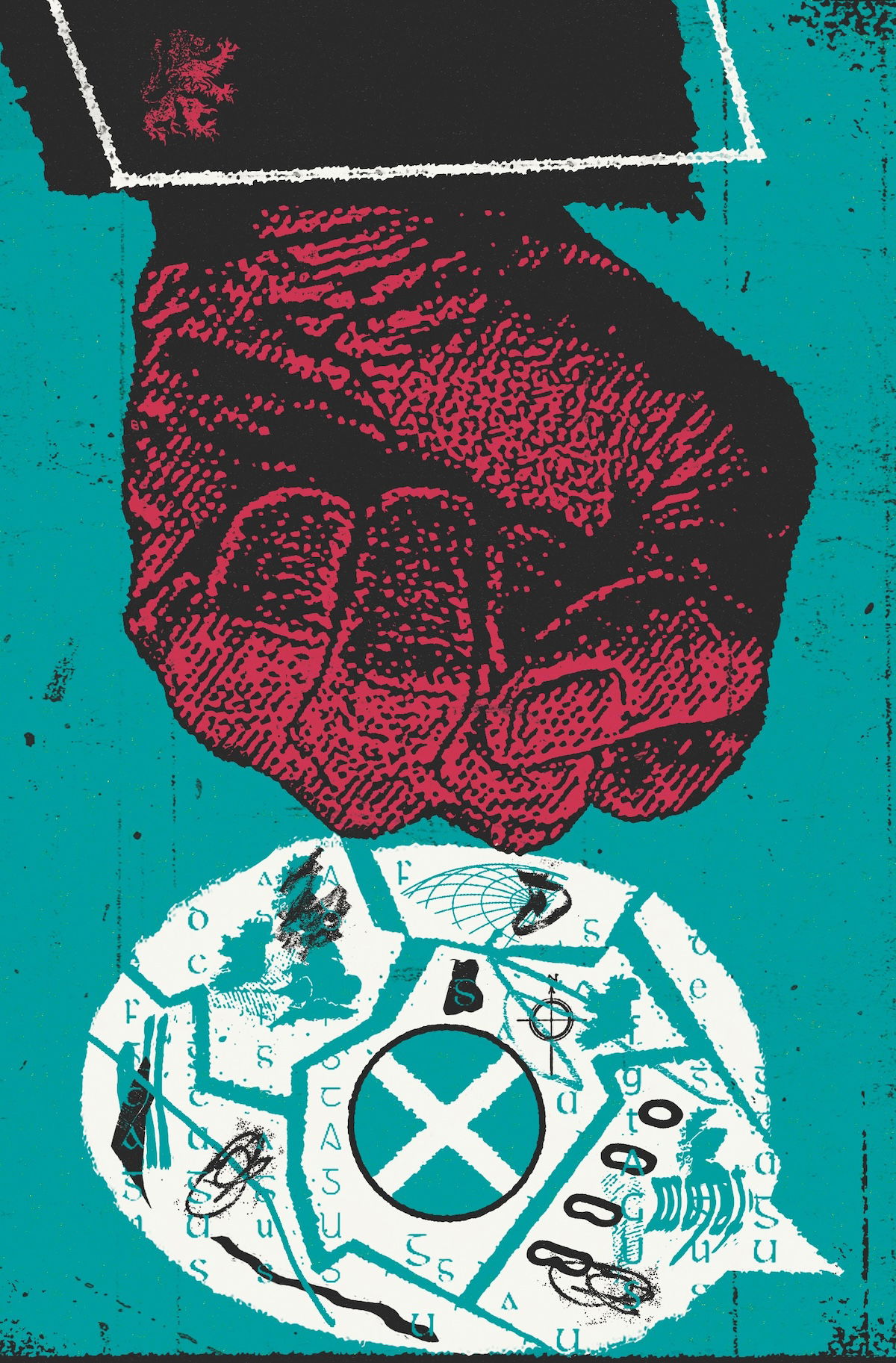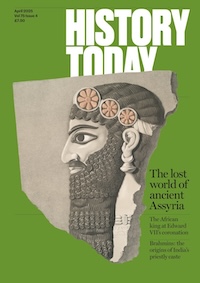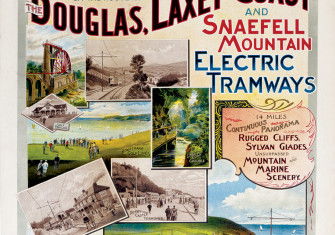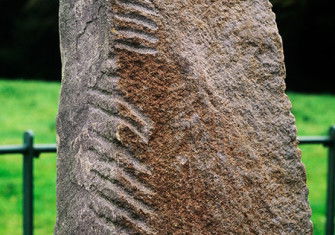The Ghosts of Gaelic
Gaelic language and culture in Scotland have a long history, often subsumed by English. Is there hope for their future?

April 2025 is the 20th anniversary of the Gaelic Language Act (Scotland) of 2005, passed unanimously by the Scottish Parliament with the aim of ‘securing the status of the Gaelic language as an official language of Scotland commanding equal respect to the English language’. It has provided the main policy framework for Gaelic since then. Scottish language policy is set to be reshaped by the Scottish Languages Bill, currently working its way through Holyrood, which will give official status to both Gaelic and Scots. This gives occasion to reflect on the place of Gaelic in Scotland, on the relationship of what is now a minority language to the identity of a nation which has had ambiguous and conflicting relationships with Gaelic. What was until the 14th century the primary language of Scotland was, in the 2022 census, spoken by 2.5 per cent of the population (up from 1.7 per cent in 2011). Ever-greater numbers of people are learning the language in school and university or through apps such as Duolingo and the Speak Gaelic initiative, but the shift to English is now at an advanced stage even in the remaining communities with high proportions of Gaelic speakers, including in the Western Isles, Skye, and parts of the Inner Hebrides. The language has now effectively vanished from much of the country: when the language goes from a place, it is not just irregular verbs, syntax, and morphology that are lost, but also the culture that lived within that language, shared among the people who spoke it.
Macpherson and Ossian
Attempts to preserve or transmit Gaelic culture through English have, however, risked obscuring it entirely. Perhaps the most notorious example occurred in the 1760s, when the Gaelic-speaking Highlander James Macpherson published a series of works in English, Fragments of Ancient Poetry (1760), Fingal (1762), and Temora (1763), known collectively as Ossian after the ancient Gaelic bard whose works Macpherson claimed to be translating. The prose-poems, invariably about doomed heroes fighting bravely against overwhelming odds, abound in fog, clouds, blasts of wind through groaning trees: ‘The hills are troubled before the king! The dark woods echo round, and lighten at his steel. See him, amidst the foe, like Colgach’s sportful ghost when he scatters the clouds, and rides the eddying winds!’ This king, Fingal, is wise, brave in battle and magnanimous to friend and foe alike.
Ossian became a runaway success across Europe, and was profoundly influential on the development of Romanticism in literature, art, and music. The heroes who bestrode his Highland landscapes became household names in Britain, France, Germany, Italy, and the Nordic countries as his works were translated, imitated, and adapted. Macpherson claimed to have been translating works he had collected from manuscripts and from travelling the Highlands transcribing poems that had survived orally. However, doubts sprang up almost immediately and detractors claimed Ossian was entirely his own creation. The debate played out in often bitter polemics for many years.
Ossian is still primarily defined by the controversy over its authenticity. Much of the most influential ink on the matter was spilled by people such as Samuel Johnson in the 18th century, who absurdly claimed that there was no written Gaelic literature more than 100 years old, and Hugh Trevor-Roper in the 20th, whose ‘gross errors and excesses’ (per the Celticist Donald E. Meek) at least had the virtue of stimulating more informed commentary. Neither Johnson nor Trevor-Roper had any Gaelic, let alone familiarity with its heroic legendary traditions.
The controversy is often invoked in discussions of early modern nation-building. Ossian is a magnet for those interested in how Scotland came to understand itself in the 18th and 19th centuries and beyond. Indeed, from an English-speaking point of view it is easy to see Ossian as a bolt from the blue, an eccentric production emblematic of the anxieties and contradictions of post-Union and post-Culloden Scotland trying to articulate or invent an identity amid rapid and bewildering political, cultural, and economic change. There may be some fragments of folklore or ‘Celtic mythology’ (whatever that is, exactly) in there, but this must be taken on trust or rejected, and they are in any case difficult to assess.
From a Gaelic perspective, however, it is clear that Ossian is a manifestation of a well-attested tradition that existed long before and long after Macpherson’s time, albeit one which departs from the mainstream of that tradition in form, style, and content in many ways.
Finn MacCool
Narratives of Fionn (earlier, Finn – MacPherson’s Fingal) and his band of warriors are seen in poetry and prose going back to the first half of the eighth century, and form what Celticists usually call the Finn Cycle. This is a vast corpus comprising sagas, romances, poems, ballads, place-name lore, and more, which continued to be produced into the 18th century and some material from which continues in oral tradition today.
The fían was a real social institution in early medieval Ireland and the Gaelic-speaking areas of what would become Scotland from the eighth to the tenth century. This was a group of young freemen, who were yet to marry, inherit property, and assume the responsibilities of settled life. They spent their time hunting, raiding, and in mercenary service. While they often caused real problems and mayhem, they seem to have been a normal if bothersome feature of early medieval Gaelic life. Ecclesiastical writers found them especially troubling – an entry in the Annals of Ulster for 847 calls the fían-men ‘sons of death’.
The fían had ceased to exist as a real social institution by the tenth century – possibly due to the need for larger-scale military organisation in response to Scandinavian incursions and settlement – and no disapproving cleric or exasperated farmer had any personal experience of the depradations of the actually existing fían by the time of the compilation of Acallam na Senórach (‘The Conversation of the Old Men’), a compendium of Finn lore guest-starring St Patrick, in about 1200.
In time, the traditions about one particular fían, Finn son of Cumall (Fionn mac Cumhail in the modern Gaelic languages, often anglicised as Finn MacCool), dominated, and his fían came to be seen as the warrior band par excellence. The body of material is extensive: from the period to c.1200 alone Kevin Murray of University College Cork has identified some 29 Finn Cycle texts as well as 16 compositions about Finn in the Dindshenchas tradition (stories explaining the origins of place names), and 24 references to Finn and his warriors in other texts.
The oral tradition
Comparing pre-Macpherson material about Finn to the body of material collected after the 1760s shows great continuity. There are, of course, the variations innate to oral tradition, but in form, style, and content the bulk of material pre- and postdating Ossian clearly belongs to the same tradition.
Tradition bearers, in general, took little if any notice of Macpherson – which is hardly surprising as many of them, especially in the 18th and earlier 19th centuries, were not literate and had little if any English. Schoolmasters, ministers, and academics had all read their Macpherson, but the singers of ballads and reciters of tales mostly had not. As folklore collection became more formalised, and as technology evolved to enable audio recordings on wax cylinders, wire recordings, and eventually tape, specialists continued to collect ballads, stories, and proverbs about Fionn and his men. The Irish Folklore Commission (from 1935) and the School of Scottish Studies (from 1951) were especially important in this work, recording everything from children’s counting games using the names of the heroes to long oral prose narratives, from ballads recognisable from 16th-century manuscripts to highly localised traditions about the locations of heroes’ graves or fortresses. The quantity of material is vast: Harvard University’s online Fionn Folklore Database catalogues around 3,500 items of orally collected Fionn lore from Scotland, Ireland, the Isle of Man, and the Gaelic diasporas in North America.
Gaelic today
The language in which this immense body of tradition has been created, transmitted, and maintained is now under severe existential threat as the vast cultural and economic power of English joins the crisis of affordable housing in rural Gaelic communities and the breakdown of domestic intergenerational language transmission. But the works of the Finn Cycle might yet have a meaningful future, including in new art forms and expressions. In order for that to happen we need to have stable Gaelic communities to sing the ballads and tell the stories, with formal and informal education that invites new generations into the tradition. These stories and songs are fully worth studying, learning, and enjoying for their own sake, and should not be seen simply as part of the backdrop to Ossian. Decentring the anglophone perspective and its preoccupation with Macpherson allows the tradition and its bearers to speak on their own behalf. In a similar way, if the new Scottish Languages Bill is to succeed in securing the Gaelic and Scots languages in the face of immense pressures, then the needs of the communities speaking those languages must be at the heart of it. The Bill’s proposals for areas of linguistic significance (in which a certain percentage of the population are Gaelic speakers) are a step in the right direction, but it is not entirely clear how these will relate to community language planning or – crucially – to funding. There have been major advances in Gaelic education and broadcasting over the last generation: Gaelic community development needs to see the same.
Duncan Sneddon is Lecturer in Celtic at the University of Edinburgh.






